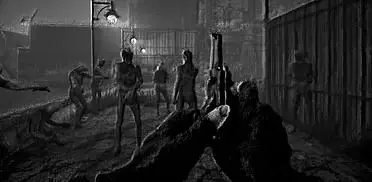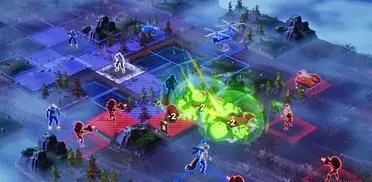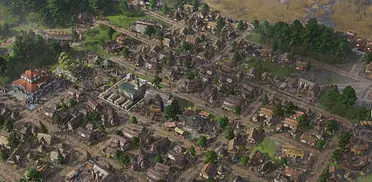We’re only a few months into 2017 and there’s already massive amounts of Game of the Year contenders coming your way. Atelier Firis: The Alchemist and the Mysterious Journey isn’t likely to be high up in those ranks, but it’s certainly something special in its own right.
Those sitting in my position likely don’t know how an Atelier game works; so here’s a brief explanation from a fellow newcomer. They’re traditional turn-based JRPGs that are inherently more interested in presenting you with the soft struggles of a few cute anime girls in a vibrant fantasy world. There’s no world about to be destroyed by a megalomaniac and no earth-shattering meteor about to be dropped on the head’s of its denizens. Atelier games are all about running around simple, if not eye-catching, lands, picking up materials to turn into various items, weapons and tools eventually used to gather more goods through combat, logging, mining and harvesting to help those in need.
And Atelier Firis doesn’t really stray far from that mark. Transitioning from the title screen straight into an introduction and subsequent conversation between Firis and the leader of her secluded cave-village, living behind a giant iron door doesn’t mean young Firis is to be without her gorgeous garments. In true GUST fashion, all the girls within the Atelier universe don impressively designed dresses with more frills than a 5-year old beauty pageant contestant.
Immediately proving she’s more brain than brawn - in some respects - it’s revealed that Firis is tired of a life that sees her bend down to collect two lots of ore 5 meters from her current position before calling it a day. With her sister, Liane, being permitted to leave the dark cave to hunt for food while she barely even gets to understand the concept of wind in the outside world, Firis gets into a fight with her parents before Sophie - from the last game in the series - blows a hole through the cave’s iron barricade and agrees to put Firis’ ore-detecting mind to better use through alchemy.
Learning the basics of how a series of seemingly unrelated knickknacks can become something of value out in the real world, Firis and the townspeople are convinced that what she lacks in raw power will be made up for in her ability to devise other means of solving her problems out on the surface. It’s a lesson in time-management and how long certain items take to procure with each craft shaving more time off the clock. You’ll be given the opportunity to test the game’s turn-based battle system just before heading up to the surface, but after that, it’s completely up to Liane to keep Firis safe in battle while the younger sister tosses bombs and meager staff blasts until they reach their first destination.
Following in the footsteps of her teacher, Firis is permitted leave onto the surface world under one strict condition - that she passes the alchemical world’s equivalent of a Lawyer’s bar exam in a year’s time. Being a feat that even Sophie has yet to manage, there’s a litle more to it than simply churning a cauldron from the comfort of her portable atelier tent.
Throughout her mission, Firis and her sister come across countless new allies who’s names won’t stay in your short-term memory long enough to find a place in your brain to call home. Broken up into a seemingly never-ending chain of cutscenes not all too dissimilar to past GUST titles, it’s difficult to say that there’s never time for quiet in the whole game. Whether you’re letting the days go by as you conjure up item after item or just see the sun part the clouds at the crack of dawn, one of the game’s many eventual party members will have something to say. We’ll class it as a good balance between the game’s general repetition and lack of any real character development, but you’re far more likely to be interested in the character’s for their combat skill over their remarks and quirky mannerisms.
In need of three letters of recommendation, it’s up to Firis and her growing gang of travelers to seek out other alchemists capable of providing her with the goods. Reaching about 10 hours of playtime before earning your second, the method of convincing experienced conjurers that Firis is the real-deal can be boiled down to the fact that crafts sap up anywhere between 4-32 hours of in-game to complete. Meaning you’re looking at a good few months of effort for Firis to make it across each of the stepping stones gating her from the exam over in Reissenberg. We can respect the time management, but it all makes the game feeling notably shorter than your standard JRPG.
Despite her relative inexperience, her ability to convince those that she’s serious when it comes to taking the exam before the end of her generous curfew typically lies in aiding the recommending alchemist in question with various tasks very similar to the townsfolk requests back during the game’s opening chapter. Those familiar with the setup of MMORPGs will know what to expect when it comes to running errands for other NPCs. Kill a certain amount of enemy X, bring (or, in this case, synthesize) this item or kill this monster over there that’s causing a problem for one reason or another.
While most of these side-quests are picked up in towns or slightly off the beaten track, they typically reward the player with points dragging them closer to spontaneously learning a new craft recipe - of which never seems to stop - to a decent amount of the game world’s currency that can be traded to merchants for ready-made equipment, materials or, in my case, to hire a new party member 10 levels above my own to pave the way at a faster rate.
Combat itself takes the form of a fairly standard turn-based affair on a location-based grid with character stats deeming what they can do and how often before the enemy takes a jab at them. Each character comes equip with several skills costing mana that can vary between wide-range hits to staggered swings, debilitating strikes and handy heals with 3 characters (plus Firis) being present on the field at any one time with one left on reserve to be switched out whenever necessary. Other allies lie in wait at various inns and need to be tracked down yet again should thier particular weapon skills suddenly seem more viable for the task at hand.
Crafting is likely handled to the best of its ability, but even the initial tutorial didn’t stop me from scratching my head for a good long while. Likely being another classic case of ‘easy to learn, hard to master’, crafting boils down to selecting the finest ingredients, trying to cover as many of the craft grid’s linked lines and reaping the benefits of the traits held within the materials. A lot of numbers and colours fall into this if you’re trying to make the perfect craft, but you can get by just fine with the basics. Without a solid grasp, I was producing weapons with multiple stat boosts and extra attacks for the wielding character despite being red/green colour blind. So who know’s what an able-bodied player will manage to throw together with the right materials.
There’s little reason to have played any other title in series before jumping straight in with this one, as the stories are more or less kept separate other than a few cross-overs every now and then. GUST isn’t jumping on the fantasy epic train with this one - they have other franchises for that. So if you’re looking for a colourful, cutesy, relatively relaxing way to get your standard-issue JRPG fix, the Atelier series is a good way to go about it; and Atelier Firis is likely to be the best until the next one rolls around.
ATELIER FIRIS: THE ALCHEMIST AND THE MYSTERIOUS JOURNEY VERDICT
Atelier Firis certainly lacks the depth that hardcore JRPG fans come to expect from the long-standing genre and hardly taxes the brain with morale decisions, but it gives a relatively safe environment in which to get to know some colourful characters and beat up monsters in some rather impressive ways. The soundtrack does little for the ears and the characters are likely to be relatively forgettable, but it’s a game full of charm and a good recommendation for those looking for something a little less broad in scale at a time full of AAA blockbusters like Horizon: Zero Dawn and Mass Effect: Andromeda.
Good vs Bad
- Colourful enough to brighten up the dullest of days
- A classic combat system that doesn't try to needlessly turn itself on its head
- Tutorial masks itself perfectly: teaches the basics, but keeps the advanced stuff optional
- Characters are largely forgettable, but offer enough comic relief to keep things flowing
- While generally a good port, the game seems to struggle at anything above 1080p. Almost 0 settings to tweak
- Soundtrack is about on par with past GUST titles: It's largely forgettable







